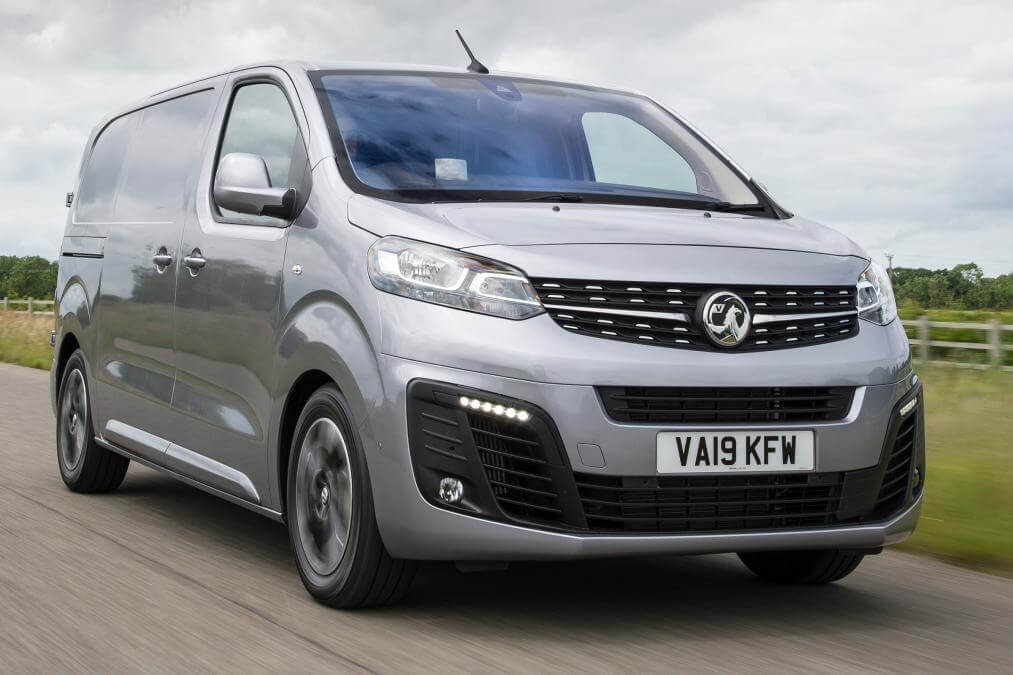The Vauxhall Vivaro has tapped into the PSA Group’s DNA and become more car-like than ever to drive

The medium-sized Vauxhall Vivaro van has been for sale as part of the Vauxhall van line-up since the start of the 21st Century. It has been a popular choice for buyers, especially as it’s Made In Britain: a fact that Vauxhall is proud to promote. But for the third-generation model launched in 2019, the Vivaro has been given a radical revamp.
Previous versions of the Vivaro have been the product of a joint venture with Renault, and as a result, it has shared much with the Renault Trafic mid-size van. But with Vauxhall’s acquisition by the PSA Group in 2017, the third generation Vivaro has seen wholesale changes under the skin. The van now shares its mechanicals with the Citroen Dispatch and Peugeot Expert, not to mention the fourth model in the line-up, the Toyota Proace.
One important factor to note is that the Vivaro is still Made In Britain – the Luton factory where the last model was built had a multi-million-pound refit so that manufacturing could continue at the site. Here the Vivaro is built in two lengths, L1 and L2, although unlike the old Vivaro, the L2’s extra length is behind the rear axle, so both versions have the same wheelbase. The Vivaro is no longer available with a high-roof option, but the Vivaro Double Cab continues. This has a second row of seats to create a five-seater van, and it’s available in the same L1 and L2 lengths as the panel van.
Overall, the third-generation Vivaro is shorter and narrower than the old model and there’s slightly less width between the wheelarches, but load volumes are slightly bigger than before thanks to a slightly higher roof and less intrusion from the wheelarches. Vauxhall also offers a through-load facility for the standard-fit steel bulkhead that allows you to load long, narrow items all the way into the passenger side footwell. Payloads are improved, too.
Power comes from two engines, either a 1.5 Turbo D or a 2.0 Turbo D. The 1.5 Turbo D comes in 100PS and 120PS outputs, while the 2.0 is offered in 120PS, 150PS and 180PS guises. All vans are front-wheel drive with a 6-speed manual gearbox, although the 180PS motor has an 8-speed auto as standard. All vans get a 70-litre fuel tank, while a 22.5-litre AdBlue tank will need filling every few thousand miles. It’s also worth noting that the more powerful 2.0 Turbo D engines aren’t offered in the most basic versions of the Vivaro.
The Vivaro range comprises Edition, Sportive and Elite trims, while Vauxhall’s naming structure sees every version of the Vivaro get a number that reflects its gross vehicle weight. All Vivaros now come with twin sliding side doors, driver and passenger airbags and cruise control, while a DAB radio with Bluetooth, separate cab and load area locking, electric windows, 12 Volt and USB connections are all included.
Sportive models add a touchscreen infotainment system with Apple CarPlay and Android Auto, air con, rear parking sensors, the through-loading bulkhead, metallic paint, plastic wheel trims, auto lights and wipers and an alarm.
At the top of the range, the Limited is aimed at small and medium enterprises (SMEs) and the self-employed. It adds luxuries such as alloy wheels, sat-nav, front and rear parking sensors, and Vauxhall’s suite of safety kit, including lane assist, adaptive cruise control and blind spot alert, among others.
Overall, the Vauxhall Vivaro is a more user-friendly package that should appeal to medium-sized van buyers, and it should be available with more competitive finance deals than its Peugeot, Citroen and Toyota counterparts. As well as these rivals, the Vivaro faces competition from the Renault Trafic/Fiat Talento/Nissan NV300 trio, plus the VW T6 Transporter and the front-running Ford Transit Custom. But it’s certainly worth a place on any van buyer’s shortlist.
Source: autoexpress.co.uk


 Finance options
Finance options  Quote
Quote